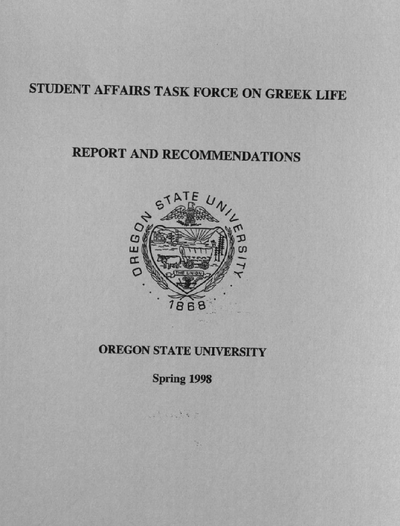Both Oregon State University (then Oregon State College, or OSC) and its affiliated Greek societies directly experienced the impact of the Civil Rights Era. In many ways, Oregon and its college campuses led the way in recognizing and removing the potential for racial discrimination. Oregon State College’s fraternal organizations made early and rapid strides to eliminate racial restrictions beginning as early as 1947, and by 1953 seventeen of the thirty fraternities on campus had removed racial, color, and religious restriction clauses from their membership rules.
In 1960, the Oregon State Board of Higher Education declared that it would “oppose and prevent...all discrimination based on race, color or religion.” A year later, they set January 1, 1963 as the date after which they would “withdraw recognition of any fraternity or sorority whose national charter then requires local chapters to restrict their membership on the basis of race or religion.” But Oregon State College was already working to eliminate discrimination, and by 1960, twenty-six out of thirty-one campus fraternities had revised their membership rules, and by 1963, thirty-one of thirty-three fraternities associated with Oregon State College were a part of national fraternities that had removed discriminatory restrictions; the remaining two fraternities had received exemptions from following their national policies.
In 1966-67, OSC’s Greek system faced a challenge to its anti-discrimination policies, when a Japanese-American student named Eugene Okino was admitted to the local Beta Pi chapter of the Sigma Chi fraternity. The outcome of the Okino episode affirmed Oregon State College’s commitment to ending discrimination, and set a precedent for greater local control of fraternity admission procedures.

